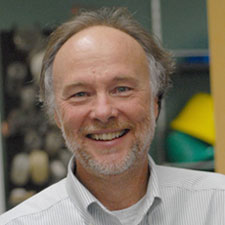February 22, 2016
Hageman Distinguished Lecturer in Agricultural Biochemistry

Douglas C. Rees, professor of chemistry at Caltech, will present "Ironing out the nitrogenase mechanism" at noon Wednesday, Feb. 24, in the McVay Family Town Hall, 114 Leadership Studies Building. Following the public lecture, Rees will present a research colloquium titled "ABC transporter structure and mechanism" at 4 p.m. at the Terry C. Johnson Cancer Research Center, 36 Chalmers Hall. Both events are part of the Richard H. and Elizabeth C. Hageman Distinguished Lectureship in Agricultural Biochemistry, sponsored by the biochemistry and molecular biophysics department. The lecture and colloquium are free and open to the public.
Rees had his first experience with electron transfer processes in microbes as an undergraduate studying cytochrome in Neurospora with Carolyn W. Slayman at Yale College where he completed his bachelor's degree in molecular biophysics and biochemistry in 1974. In 1980 he received a doctorate in biophysics, determining crystal structures of carboxypeptidase A with William Lipscomb at Harvard University. While there, he also became acquainted with multicenter electron-sharing bonds, for example in boranes. During a two year postdoctoral appointment at the University of Minnesota with James B. Howard, he successfully produced the first crystals of the nitrogenase iron protein from Azotobacter vinelandii. He has continued his work with several nitrogenases and has had a productive collaboration with Howard for 35 years.
After first joining the faculty of the Department of Chemistry and Biochemistry at UCLA in 1982, Rees moved to Caltech, in 1989. Since 2000, he has been a member of the American Academy of Arts and Sciences and the National Academy of Sciences. Rees is the Roscoe Gilkey Dickinson professor of chemistry at Caltech, a Howard Hughes Medical Institute investigator and dean of graduate studies at Caltech since July 1, 2015.
The Rees group has focused on structures and mechanisms of complex metalloproteins and integral membrane proteins, particularly those involved in ATP-dependent transduction processes, and known as ABC transporters. Of his 160 publications, one-fourth have dealt primarily with nitrogenase. This enzyme is a moving target and gives up its secrets very slowly. The closer you look, the more surprises it yields. The unusual structures of the nitrogenase complex, and particularly its FeMo-cofactor, now solved at about one Ångstrom resolution, have revealed a hexacoordinate carbon atom at the center and a sulfur atom that can undergo a reversible displacement to an alternative site. There is also a lone iron atom in between the FeMo-cofactor and another unusual Fe8-S7 cluster — the P cluster — which itself rearranges during enzyme function. There may be other surprises coming.
The Richard H. and Elizabeth C. Hageman Distinguished Lectureship in Agricultural Chemistry is made possible by the endowment provided by the Hagemans. Professor Hageman was recognized for "his formulation that rate-limiting enzymes could be identified and used as a basis to select for specific traits which lead to higher crop yields. This singular focus, which resulted from and contributed to his research on nitrate reductase, is so basic and now so readily understood that it is taken for granted in all of plant science." His major contributions to understanding of plant nitrogen metabolism included the finding that nitrate reductase is an inducible enzyme, and identification of nitrite reductase as a distinct enzyme dependent on ferredoxin in chloroplasts.
